Abacot Rangers are extremely rare, beautiful, dual-purpose light ducks. They’re wonderful egg-layers, good for meat, good foragers, long-lived, friendly, hardy, and absolutely gorgeous.
They’re also known as the Hooded Ranger in America, the Streicherente or Streicher in Germany, and the La Canard Streicher in France.
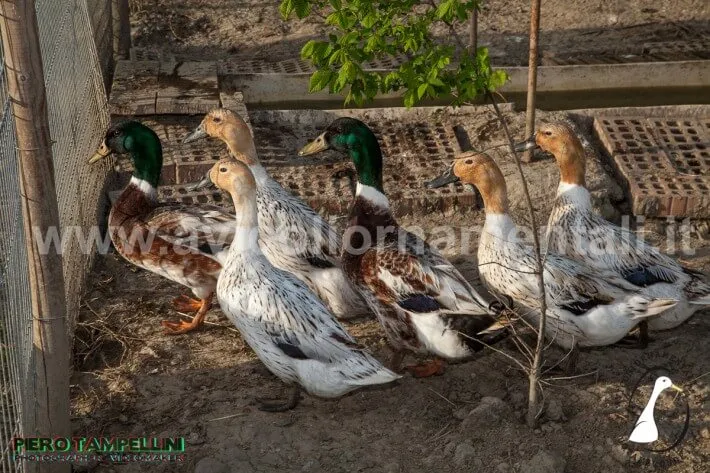
All photos on this page used with permission from avicoliornamentali.it.
Abacot Rangers are active foragers, and they usually live for at least ten years. They’re not good fliers, so you never have to clip or pinion their wings.
They lay 180-200 eggs a year, sometimes more or less. In the Wye College egg-laying trials in 1922-23, four Abacot Rangers laid 935 eggs in a year, which surpassed all other breeds represented in the trial.
Even being so prolific in the egg department, they’re actually not bad mothers and sitters. Some individuals aren’t interested in going broody, but others are.
Better yet, they’re a lot stockier than many of the other excellent egg-layers, so they’re pretty good meat birds.
Abacot Rangers weigh 5.5 (2 kg) to 6.6 pounds (3kg).
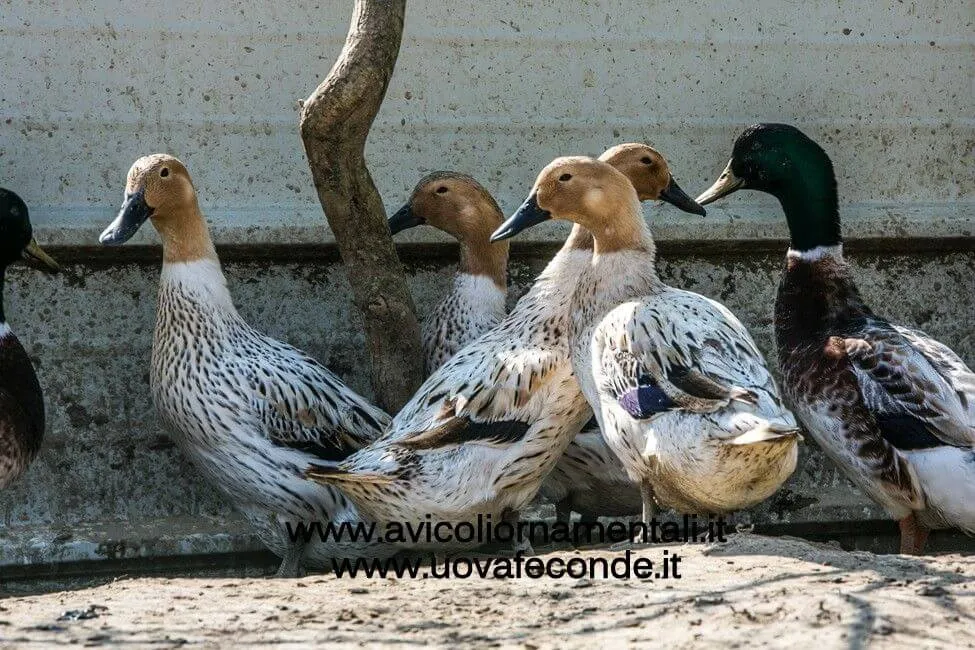
Female Abacot Rangers have a buff-colored “hood” on their head and males have an iridescent green hood when in nuptial plumage (during breeding season) and a black hood when in eclipse plumage.
The bill color of the Abacot Ranger is sex-linked: by eight weeks of age, the sex of the ducklings can be discerned by their bill color. Males will have olive green bills, and females will have dark slate grey bills.
It’s a pity the Abacot Ranger is so rare. Many people have never heard of or seen one.
I encourage all prospective duck owners to take a look at this beautiful breed.
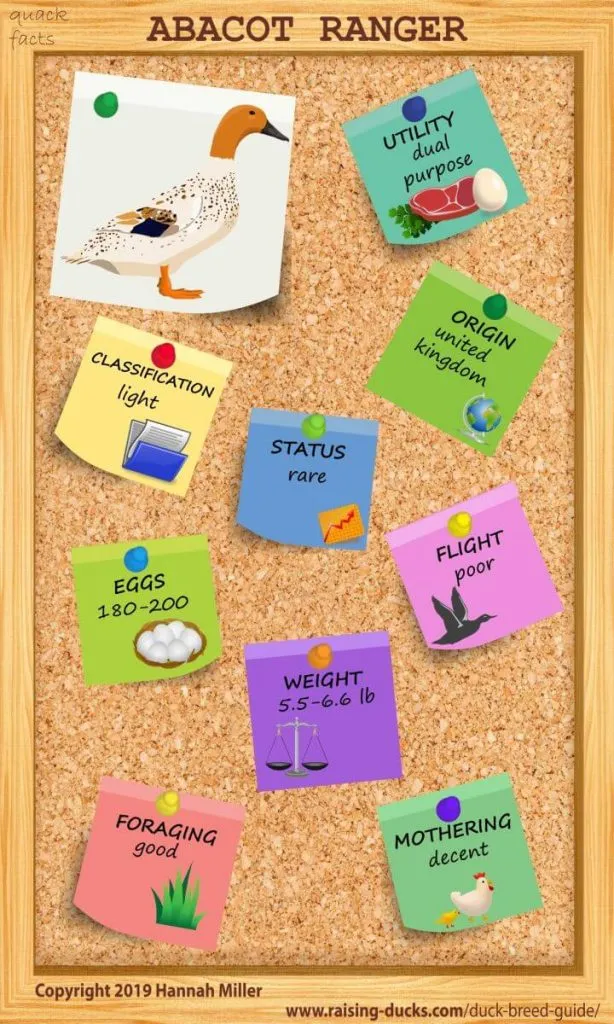
History
Between 1917 and 1922, Oscar Gray of Colchester in Essex, U.K. created the Abacot Ranger by breeding Khaki Campbells and white Indian Runners. The breed was popular for a short while, and then would have died out if it wasn’t for H. Lieker in Germany, who stabilized the color and helped the breed become more noticed in the poultry world.
Gallery
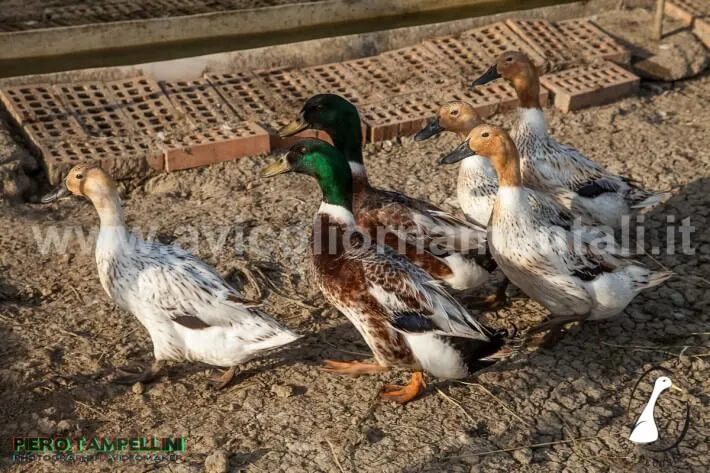
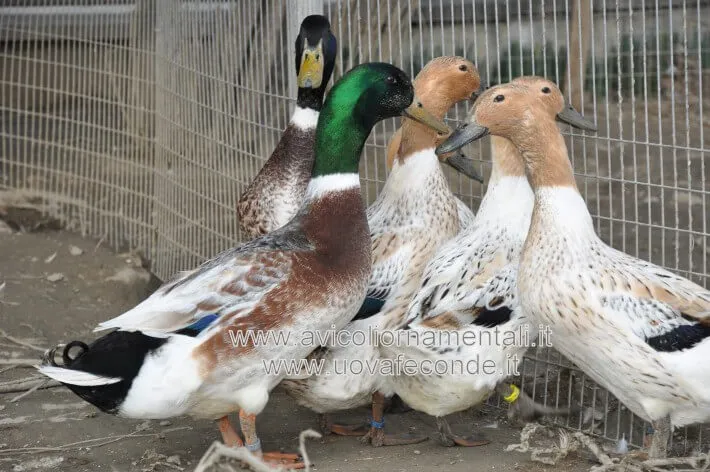
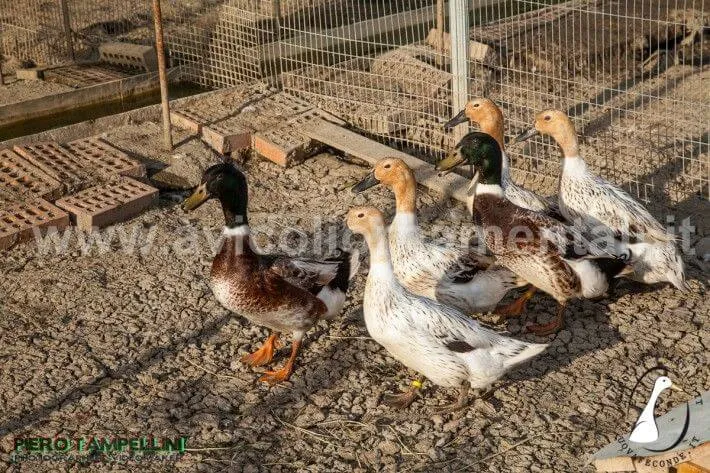

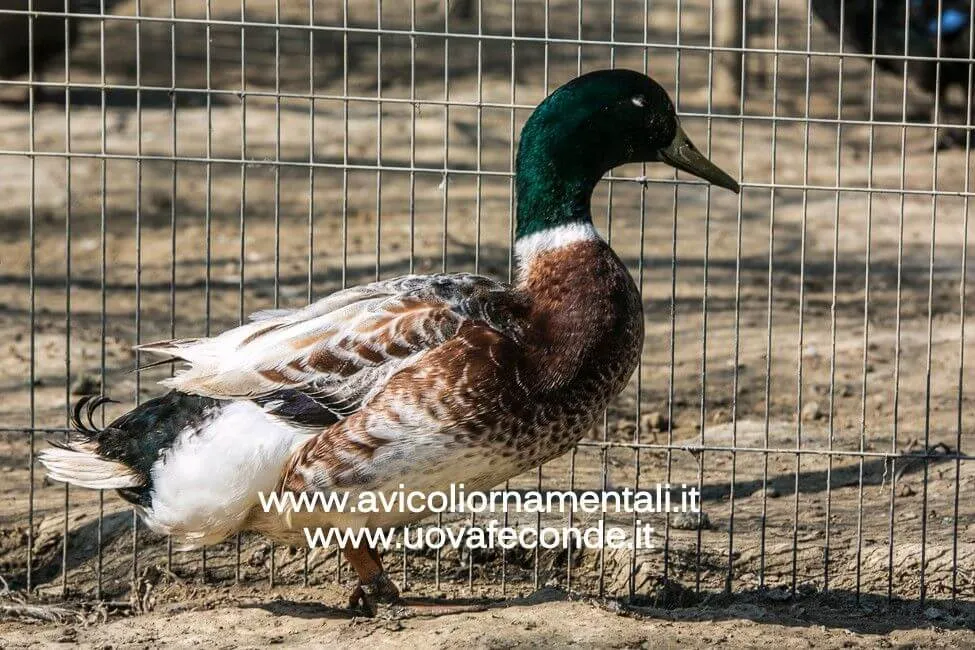
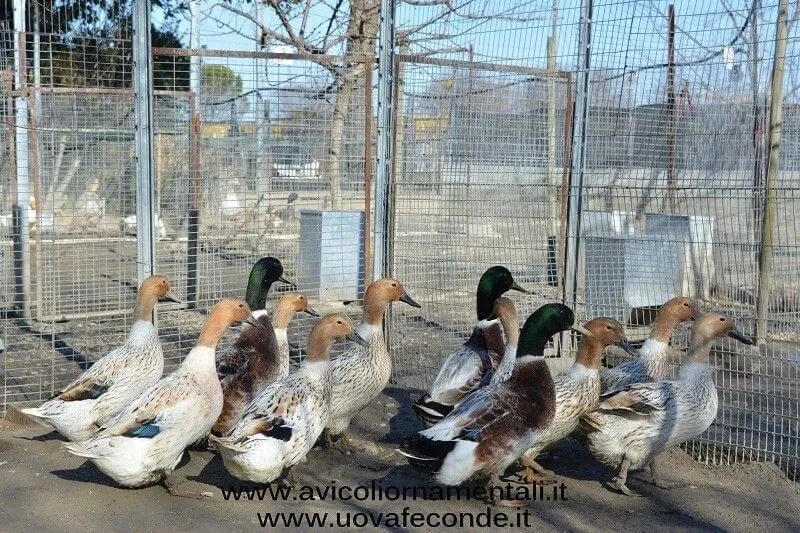
Leave a comment
Your email address will not be published.